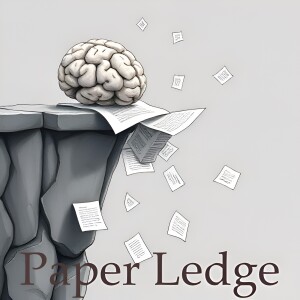
- Podcast Features
-
Monetization
-
Ads Marketplace
Join Ads Marketplace to earn through podcast sponsorships.
-
PodAds
Manage your ads with dynamic ad insertion capability.
-
Apple Podcasts Subscriptions Integration
Monetize with Apple Podcasts Subscriptions via Podbean.
-
Live Streaming
Earn rewards and recurring income from Fan Club membership.
-
Ads Marketplace
- Podbean App
-
Help and Support
-
Help Center
Get the answers and support you need.
-
Podbean Academy
Resources and guides to launch, grow, and monetize podcast.
-
Podbean Blog
Stay updated with the latest podcasting tips and trends.
-
What’s New
Check out our newest and recently released features!
-
Podcasting Smarter
Podcast interviews, best practices, and helpful tips.
-
Help Center
-
Popular Topics
-
How to Start a Podcast
The step-by-step guide to start your own podcast.
-
How to Start a Live Podcast
Create the best live podcast and engage your audience.
-
How to Monetize a Podcast
Tips on making the decision to monetize your podcast.
-
How to Promote Your Podcast
The best ways to get more eyes and ears on your podcast.
-
Podcast Advertising 101
Everything you need to know about podcast advertising.
-
Mobile Podcast Recording Guide
The ultimate guide to recording a podcast on your phone.
-
How to Use Group Recording
Steps to set up and use group recording in the Podbean app.
-
How to Start a Podcast
-
Podcasting
- Podcast Features
-
Monetization
-
Ads Marketplace
Join Ads Marketplace to earn through podcast sponsorships.
-
PodAds
Manage your ads with dynamic ad insertion capability.
-
Apple Podcasts Subscriptions Integration
Monetize with Apple Podcasts Subscriptions via Podbean.
-
Live Streaming
Earn rewards and recurring income from Fan Club membership.
-
Ads Marketplace
- Podbean App
- Advertisers
- Enterprise
- Pricing
-
Resources
-
Help and Support
-
Help Center
Get the answers and support you need.
-
Podbean Academy
Resources and guides to launch, grow, and monetize podcast.
-
Podbean Blog
Stay updated with the latest podcasting tips and trends.
-
What’s New
Check out our newest and recently released features!
-
Podcasting Smarter
Podcast interviews, best practices, and helpful tips.
-
Help Center
-
Popular Topics
-
How to Start a Podcast
The step-by-step guide to start your own podcast.
-
How to Start a Live Podcast
Create the best live podcast and engage your audience.
-
How to Monetize a Podcast
Tips on making the decision to monetize your podcast.
-
How to Promote Your Podcast
The best ways to get more eyes and ears on your podcast.
-
Podcast Advertising 101
Everything you need to know about podcast advertising.
-
Mobile Podcast Recording Guide
The ultimate guide to recording a podcast on your phone.
-
How to Use Group Recording
Steps to set up and use group recording in the Podbean app.
-
How to Start a Podcast
-
Help and Support
- Discover

Alright learning crew, Ernis here, ready to dive into another fascinating paper! Today, we're talking video understanding, and it's all about how computers "see" videos – and how they can see them better.
So, you know how our eyes don't see the world as a series of snapshots? It's a continuous, flowing experience, right? Well, traditionally, when we teach computers to "watch" videos, they're basically given a slideshow – maybe just one or two pictures per second. That's like trying to understand a basketball game by only seeing a couple of blurry photos! You’re gonna miss all the action!
That low frame rate leads to critical visual information loss.That's where this paper comes in. These researchers realized that current video understanding models are missing a ton of information because they're only looking at a few frames per second (FPS). They've created something called F-16, and it's all about cranking up the frame rate.
Think of it like this: imagine you're trying to learn how to bake a cake. If you only see a picture of the ingredients and a picture of the finished cake, you're missing all the important steps in between! But if you watch a video showing every step – mixing, stirring, baking – you get a much clearer understanding. That's what F-16 does for video understanding.
F-16 ups the frame rate to a whopping 16 frames per second! That's like watching a much smoother, more detailed version of the video. Now, you might be thinking, "Won't that be a massive amount of data?" And you'd be right! That's why they also developed a clever way to compress the visual information within each second, so the model can handle all that extra detail without getting overwhelmed.
The results? Amazing! They found that by using this higher frame rate, F-16 significantly improved video understanding across the board. It performed better on general video understanding tasks and on more specific, detailed tasks. We're talking about things like accurately analyzing what's happening in a fast-paced sports game like basketball or gymnastics. Apparently, it even out-performed some of the big name models like GPT-4o and Gemini 1.5 Pro!
But here's the really cool part. They also came up with a new decoding method that allows F-16 to run efficiently even at lower frame rates, without having to retrain the entire model. It's like having a super-powered engine that can still purr along nicely when you don't need all that horsepower.
So, why does this matter? Well, for anyone working on AI-powered video analysis, this is a game-changer. Imagine using this technology for:
- Self-driving cars: Seeing and reacting to rapidly changing traffic situations with more precision.
- Medical imaging: Analyzing videos of surgical procedures with greater accuracy to improve outcomes.
- Sports analytics: Providing deeper insights into athletic performance and strategy.
- Security and surveillance: Detecting suspicious activities in real-time with greater reliability.
This research shows us that sometimes, the simplest ideas – like paying closer attention to the details – can have a huge impact. It's not always about building bigger and more complex models; sometimes, it's about making the most of the information we already have.
And best of all? They’re planning on releasing the code, model, and data, meaning the whole learning crew will be able to play around with it.
Here are a few things I’m wondering about:
- How does F-16’s performance change when dealing with different types of video quality or lighting conditions?
- What are the potential ethical considerations of using high-frame-rate video analysis in surveillance or other sensitive applications?
Exciting stuff, right? I can't wait to see what you all think! Let me know your thoughts in the comments!
Credit to Paper authors: Yixuan Li, Changli Tang, Jimin Zhuang, Yudong Yang, Guangzhi Sun, Wei Li, Zejun Ma, Chao Zhang
More Episodes
Create your
podcast in
minutes
- Full-featured podcast site
- Unlimited storage and bandwidth
- Comprehensive podcast stats
- Distribute to Apple Podcasts, Spotify, and more
- Make money with your podcast
It is Free
- Privacy Policy
- Cookie Policy
- Terms of Use
- Consent Preferences
- Copyright © 2015-2025 Podbean.com





